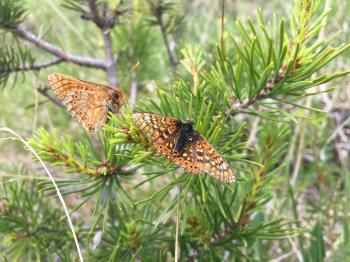Background

The loss of biodiversity is a threat affecting the whole planet, with changes in land use being one of the major drivers of species loss and extinction. Calcareous grasslands have been identified as particularly important habitats for conservation purposes due to their high biodiversity. However, in recent history, these grasslands have suffered the consequences of changes in land use, thus affecting the inhabitants for which these habitats are important, such as insects. Insects represents the most numerous taxon on the planet, hence, they are fundamental for overall species diversity. Further, they perform crucial ecosystem services, such as pollination. One group of insects that are relatively well-studied, as well as being very charismatic, are butterflies. Still, it has been estimated that at least a third of European butterfly populations are declining due to land abandonment or agricultural intensification.
The Marsh fritillary is a threatened butterfly found on moist calcareous grasslands. While there are attempts to conserve the species' in Europe, such as the establishments of Natura 2000 sites, it is declining in most European countries. Thus, for efficient conservation, it is crucial to better understand the habitat preferences and requirements of the Marsh fritillary.
Aims
The overall aim of the study was to assess the habitat requirements of the Marsh fritillary butterfly on Gotland and the habitat components that are important for their presence, thus understanding the factors that determine habitat quality.
This study intended to answer the following questions:
(1) What are the habitat preferences of the Marsh fritillary in its different life stages?
(2) How does female habitat choice affect the survival of larvae?
Responsible for this page:
Director of undergraduate studies Biology
Last updated:
05/28/21
